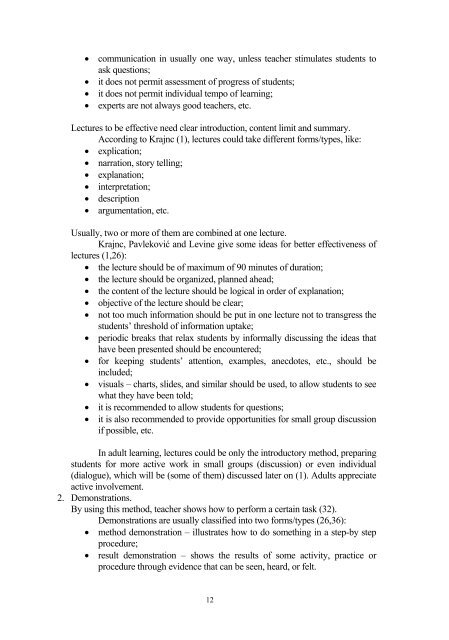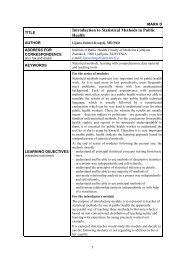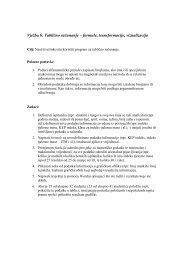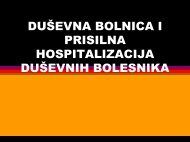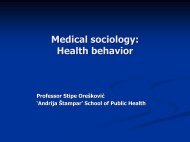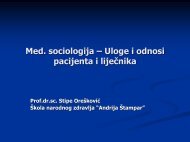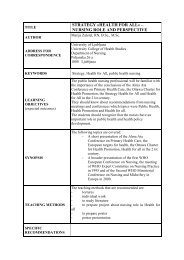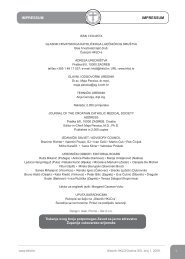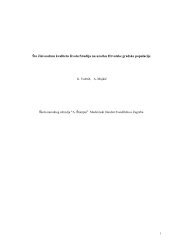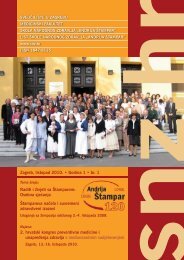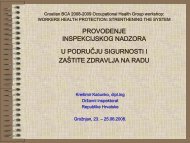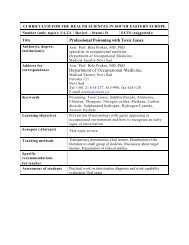STATISTINE METODE V EPIDEMIOLOGIJI
STATISTINE METODE V EPIDEMIOLOGIJI
STATISTINE METODE V EPIDEMIOLOGIJI
Create successful ePaper yourself
Turn your PDF publications into a flip-book with our unique Google optimized e-Paper software.
• communication in usually one way, unless teacher stimulates students to<br />
ask questions;<br />
• it does not permit assessment of progress of students;<br />
• it does not permit individual tempo of learning;<br />
• experts are not always good teachers, etc.<br />
Lectures to be effective need clear introduction, content limit and summary.<br />
According to Krajnc (1), lectures could take different forms/types, like:<br />
• explication;<br />
• narration, story telling;<br />
• explanation;<br />
• interpretation;<br />
• description<br />
• argumentation, etc.<br />
Usually, two or more of them are combined at one lecture.<br />
Krajnc, Pavleković and Levine give some ideas for better effectiveness of<br />
lectures (1,26):<br />
• the lecture should be of maximum of 90 minutes of duration;<br />
• the lecture should be organized, planned ahead;<br />
• the content of the lecture should be logical in order of explanation;<br />
• objective of the lecture should be clear;<br />
• not too much information should be put in one lecture not to transgress the<br />
students’ threshold of information uptake;<br />
• periodic breaks that relax students by informally discussing the ideas that<br />
have been presented should be encountered;<br />
• for keeping students’ attention, examples, anecdotes, etc., should be<br />
included;<br />
• visuals – charts, slides, and similar should be used, to allow students to see<br />
what they have been told;<br />
• it is recommended to allow students for questions;<br />
• it is also recommended to provide opportunities for small group discussion<br />
if possible, etc.<br />
In adult learning, lectures could be only the introductory method, preparing<br />
students for more active work in small groups (discussion) or even individual<br />
(dialogue), which will be (some of them) discussed later on (1). Adults appreciate<br />
active involvement.<br />
2. Demonstrations.<br />
By using this method, teacher shows how to perform a certain task (32).<br />
Demonstrations are usually classified into two forms/types (26,36):<br />
• method demonstration – illustrates how to do something in a step-by step<br />
procedure;<br />
• result demonstration – shows the results of some activity, practice or<br />
procedure through evidence that can be seen, heard, or felt.<br />
12


